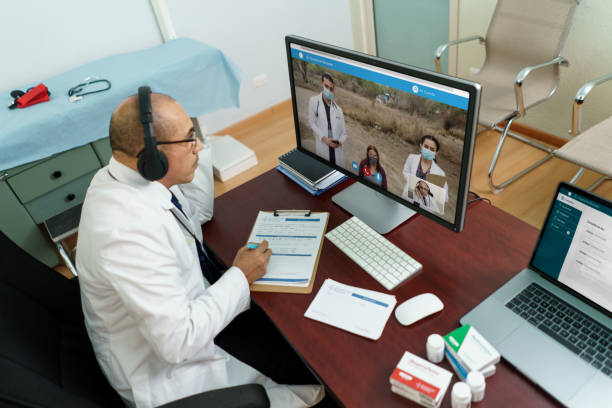In healthcare settings, electronic medical records (EMR) are becoming more prevalent. These records are being used by more sites to store patient information. Some people, however, are concerned about the safety of their sensitive health information. Understanding how this technology works may help to alleviate some of these fears.

free electronic medical records
What is an Electronic Medical Record?
A computerized record of a patient’s medical information is called an electronic medical record (EMR) or electronic health record (EHR). Typically, these records comprise a patient’s medical history, including previous treatments and notes from healthcare practitioners.
Doctors used to save this information in folders before the advent of free electronic medical records. It was time-consuming to share these files with other doctors. They would normally need to produce physical copies of the records and send them to the patient.
Because electronic medical records software is digitally store. It may be retrieve immediately. This provides numerous benefits to both individuals and healthcare providers.
The patient’s entire picture
Providers should strive for dynamic patient-centered records that monitor the patient’s care continuum throughout his or her lifespan, in sickness, and in health. Having a single, continuous record for a patient allows for a more comprehensive perspective of overall health, allowing for improved diagnosis and treatment throughout time.
Information Exchange
The ability to disseminate information across disciplines, specializations, pharmacies, hospitals, and emergency response teams, as well as to view charts on-demand via mobile devices, provides for better and more fast decision-making, especially in urgent situations.
Workflows have been simplified
Electronic medical record software boosts productivity and efficiency while decreasing paperwork. Patients and employees fill out fewer forms, giving professionals more time to meet patients. Referrals and medicines can be sent swiftly, reducing appointment and pickup wait times. Automatic reminders can notify patients when it is time for annual exams or when they are approaching milestones that necessitate regular checks. Billing and insurance claims can be file on time with integrated patient tracking.

Medical Record Software
Cost reductions and increased efficiency
Digital records and integrated communications methods can significantly reduce administrative costs by eliminating the need for transcriptions, physical chart storage, coding, and claims management, as well as facilitating care coordination and shortening the time required for hard-copy communications among clinicians, labs, pharmacies, and health plans.
Error reduction
Digital records enable improved tracking and more standardized documentation of patient contacts, potentially reducing errors. Illegible handwriting in physicians’ notes or prescriptions is no longer an issue, and coding for procedures or invoicing is simplified. Drug interactions and other indicators of possible risk can also be flagging by integrated systems.
Administrative Costs Could Be Reduced by Using Electronic Medical Records Software
While the preceding benefits are beneficial to both patients and clinicians, there are extra advantages for providers. Implementing an electronic medical records system may aid in lowering administrative costs, particularly if the system eliminates the need for paper filing.
The staff spends less time filing and accessing patient information with digital records. This effectiveness has a broader impact. By increasing the efficiency of maintaining patient information, overall efficiency improves. Doctors can provide more accurate diagnoses, and nurses can spend less time determining a patient’s needs.

free patient management software
Additional Financial Benefits of Electronic Medical Record Systems
Aside from lowering administrative expenses, electronic medical records systems can help healthcare organizations save money in other ways. Several research on the usage of electronic medical records software discovered that adopting these digital records helps businesses limit the occurrence of costly errors.
By making it easier for physicians to access patient information, they may be able to eliminate billing errors, diagnostic errors, and other difficulties that result in financial waste.


